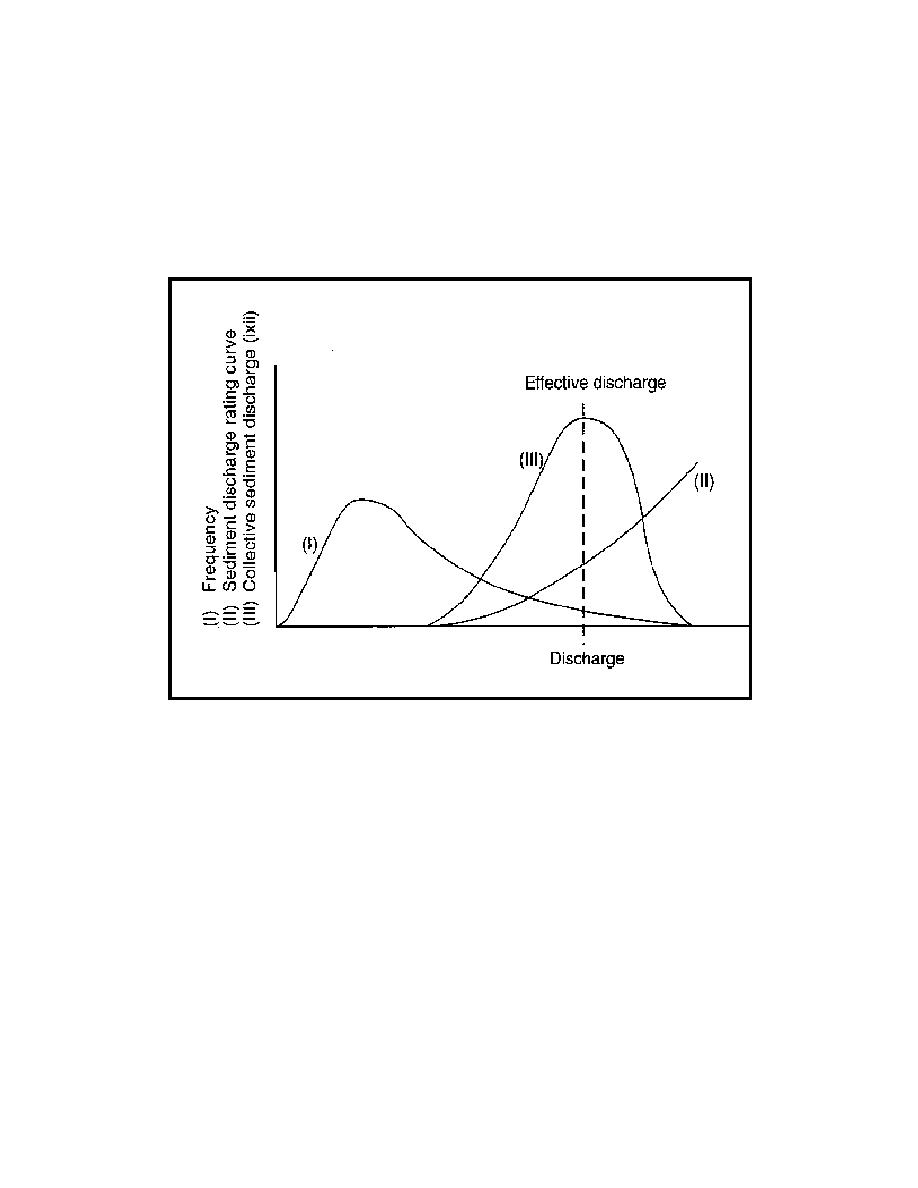
Appendix A: A Practical Guide to Effective Discharge Calculations
by multiplying the frequency of occurrence of each flow class by the median sediment load for that flow
class (Figure 1). Input data are:
i) flow data; and
ii) a sediment transport rating curve.
Figure 1
Derivation of Bed Material Load-discharge Histogram (iii) From Flow
Frequency (i) and Bed Material Load Rating Curves (ii)
The calculated value of the effective discharge depends to some extent on the steps used to
manipulate the input data to define the flow regime and sediment transport function. The procedure
described here represents the best practice in this regard, based on extensive first-hand experience.
Different procedures must be employed for gaged and ungaged sites.
Gaged Sites
At gaged sites, the first step is to group the discharge data into flow classes and determine the
number of events occurring in each class during the period of record. This is accomplished by constructing
a flow frequency histogram, which is a frequency distribution function of discharges measured at the gaging
station. Three critical components must be considered when developing the flow frequency histogram: 1)
266



 Previous Page
Previous Page
